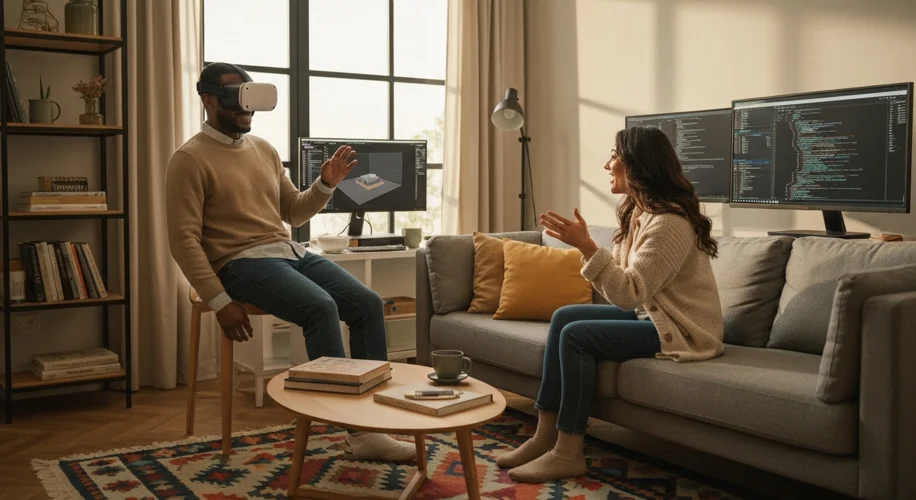Okay, so hear me out. You’re a student, maybe you’ve tinkered with some code, but the idea of building a whole virtual world seems like, well, a whole other dimension away. Then, in just two months, you and a friend go from zero to a working VR prototype. That’s exactly what happened for two students I know, and honestly, it’s seriously inspiring.
Let’s break down what they actually did. We’re talking about building a VR experience from scratch. That means covering a bunch of different skills that, on their own, can take ages to master.
First up: 3D Modeling. Think of this as sculpting your virtual world. They had to learn how to create objects – characters, environments, props – that look good and work within the VR space. Tools like Blender are super powerful here, and while there’s a learning curve, getting decent enough to build a prototype in a few weeks is totally doable.
Then came Animation. A static world is cool, but moving characters or objects? That’s what brings it to life. They learned the basics of rigging (basically, giving a 3D model bones to move) and keyframing (telling the computer where an object should be at specific times). It doesn’t have to be Pixar-level; simple animations are often all you need to convey action.
Next, Sound Design. This is often overlooked, but it’s HUGE for immersion. What does walking on virtual gravel sound like? What’s the ambient noise of your created environment? They had to find or create sound effects and integrate them so they felt natural within the VR experience.
And of course, the glue that holds it all together: Unity Development. This is the game engine where all these pieces come together. They learned how to import their 3D models and animations, set up interactive elements (like picking things up or pressing buttons), and script the logic of their VR world. For VR, this also means understanding how to track player movement and input from VR controllers.
Why is this so cool? It shows that VR development isn’t some impossible mountain to climb. With a clear goal, dedication, and the right resources, newcomers can dive in and create something tangible. It’s not about being perfect; it’s about learning by doing and pushing the boundaries of what you thought was possible.
This kind of project is a fantastic way to learn. You touch on so many different aspects of digital creation, and by the end, you’ve not only built a VR prototype but also gained a ridiculously valuable skillset. If you’ve ever thought about getting into VR development, seeing stories like this should be your sign to just jump in. You might surprise yourself with what you can create in under two months.

